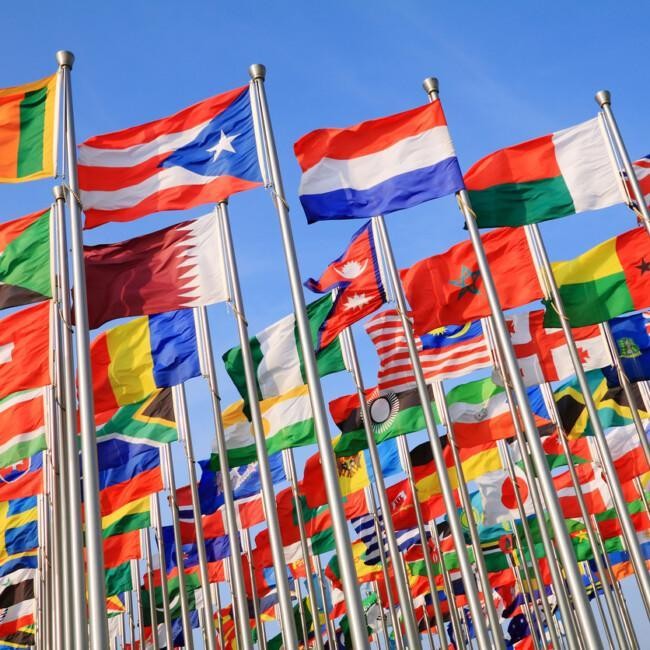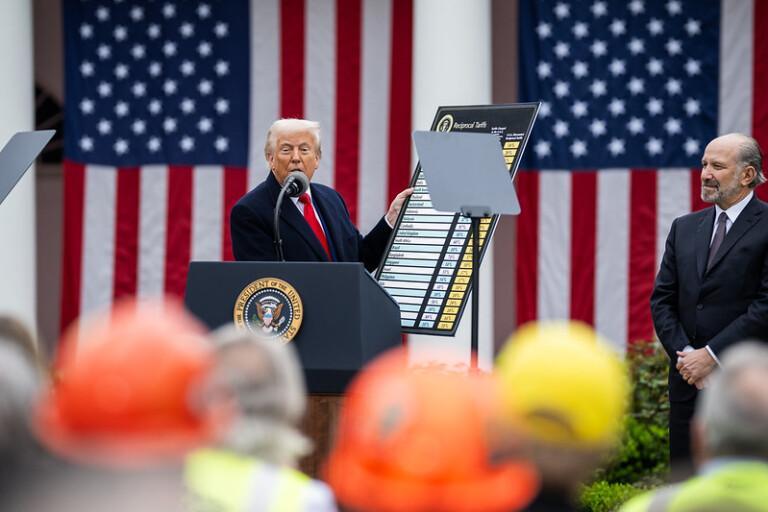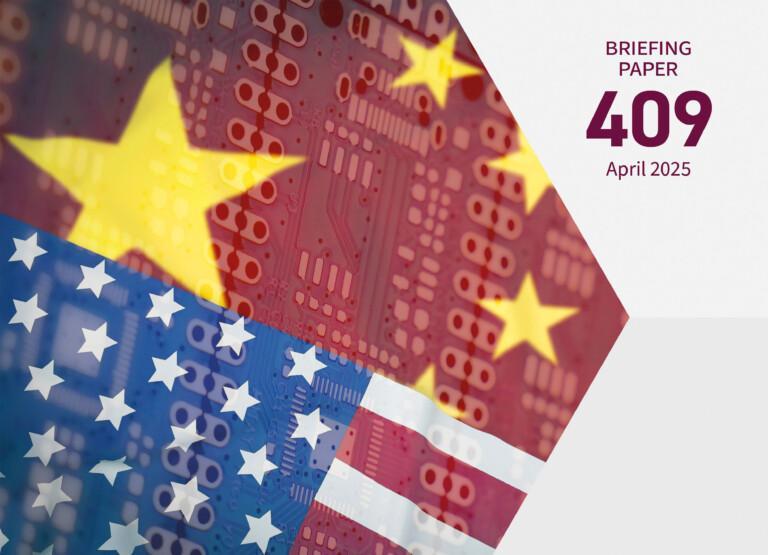
Kiinan lausunnot Ukrainan tilanteesta ovat olleet tarkkaan tapapainotettuja. Siitä huolimatta pelkona on, että Kiina vetää tilanteesta vääränlaiset johtopäätökset: voima on valtaa ja vain geopolitiikalla on merkitystä.
Kiinalaisten “haukkojen” mielipiteet kuulostavat samalta kuin Kremlin kannanotot. Kummissakin toivotaan länsimaiden suhteellisen aseman heikentyvän kansainvälisistä asioista päätettäessä.
Kiinan unelmissa on kysymys kansallisesta uudelleenheräämisestä. Jotta unelmat voisivat toteutua, Kiinan näkökulmasta historialliset vääryydet pitäisi oikaista. Tästä huolimatta Kiinan unelmien ei tarvitse olla muiden maiden näkökulmasta painajaisia.
Kiinan sotilasmenojen kasvu ei ole merkki Kiinan valmistautumisesta maailmanlaajuiseen voimankäyttöön. Kiinan päähuolenaihe on ennallaan: vakauden säilyminen niin maan rajojen sisä- kuin ulkopuolella.
Concerns about China’s reactions in the aftermath of the Crimean Anschluss
China’s reactions to the Ukrainian crisis serve as a litmus test for China’s positions regarding the international system. While China was quick to take the opportunity to accuse the West of creating instability in Ukraine, thus siding with Russia, subsequent official statements have been weighed very carefully. China has expressed neither direct approval nor condemnation of the Crimean Anschluss. This ambivalence has made it all too easy to paint a gloomy picture of the world and China’s role in it. It seems eerily feasible that China should learn two important lessons from the events: First, might is right, and even today political power grows out of the barrel of a gun, as Chairman Mao used to say. Second, geopolitics is what counts, and great powers are entitled to their spheres of influence, which have been sanctified by history. Those who — for one reason or another — wish to present rising China as a challenger to the established international order don’t have to think too hard to come up with future scenarios that have more than a whiff of gunpowder about them. The hawks in China must also be having a field day.
The United States has been vocal in aiming to convince China of its commitment to defend its Asian allies. Daniel Russel, the U.S. assistant secretary of state for East Asia, issued explicit warnings to the effect that no one in China should take the annexation of Crimea as a model. This has been commonly interpreted as a warning not to meddle with the status quo of the disputed Senkaku (or Diaoyu in Chinese) Islands, currently under Japanese control. Some pundits have expressed concerns that China might contemplate using the Crimean model to solve the Taiwan Issue, reuniting the island with the motherland under the pretext of fulfilling the wishes of the population.2 Some East and South East Asian nations also seem concerned about future attempts by the great powers to change the status quo through force, judging by their voting behaviour and statements in the United Nations General Assembly on 27 March. Of the countries with which China has territorial disputes, Japan, the Philippines, and Malaysia voted in favour of adopting the resolution, calling upon states not to recognize changes in the status of the Crimean region. Only Vietnam, due to its close relations with Russia, abstained. Relations between Malaysia and China are currently at a low ebb due to the disappearance of the Malaysia Airlines plane with mostly Chinese passengers on board, and the abduction of Chinese tourists by Malaysian gunmen. People who still remember the ethnic tensions between the Chinese and Malay populations in the 1960s may wonder whether China is more prepared to exert its influence in Malaysia’s internal affairs today in the name of protecting its citizens than it was in those days.
This paper takes a look at some striking similarities between China and Russia in terms of the two countries’ outlook on the world. Many factors give rise to concerns that Russian anti-Western bellicosity might be contagious and could flourish on Chinese soil as well. However, there are also differences, and several internal as well as external factors indicate that China is not inevitably destined to follow the Russian path to rogue-dom.
Signs of China and Russia being two of a kind
According to a report by Huanqiu Shibao (web edition), a subsidiary of the Communist Party mouthpiece People’s Daily, the Russian media have been calling for further cooperation between Russia and China in the aftermath of the Ukrainian crisis. The cooling relations between Russia and the United States should mean warmer relations between Russia and China, claims the report. Russia is China’s natural ally, despite the humiliations Russia wrought upon China, first as one of the imperialist powers and then as the Socialist big brother. After all, the United States is supporting Japan, China’s main competitor in East Asia, which prevents China from taking back Taiwan. Russia and China have a common adversary, namely the global hegemony of Anglo-Saxon culture, which precludes a truly multi-polar world. Those in Russia who warn of the threat posed by China are in reality fanatics who want to integrate Russia into the West, the report concludes, allegedly quoting Russian media sources.
There are certainly similarities in the thinking of certain factions in both Russia and China. Last autumn, the Western media stumbled across a video produced by China’s National Defense University. The video, produced in June 2013, was either accidentally or purposefully leaked onto the internet in October and deleted the following month. The video, entitled Jiaoliang Wusheng (Measuring Strength Silently), offers a historical analysis of the reasons for the fall of the Soviet Union that could just as easily be emanating from the present-day, Putin-led Kremlin. The video argues that the end of the Cold War was the reason for, not the result of, the collapse of the Soviet Union. The United States took pains to ensure that the Soviet Union ran out of means of sustenance, while Mr Gorbachev’s mistake lay in losing faith in himself and his party.
The political commissar of the National Defense University and one of the video’s scriptwriters, General Liu Yazhou, states in the video that similarly to its strategy on the Soviet Union, the United States is now targeting China and wishes to dissolve it through ‘peaceful evolution’. According to the video, the United States has already been able to lure many Chinese academics into believing in Western values. That was what lay behind the events of 4 June 1989 (i.e. the Tian’anmen Massacre), which misled people into doubting the opening up and reform policies of the Communist Party.
The video claims that the United States resorts to gene technology in agriculture and does the same in international relations, too. The ‘genes’ are Western influences, and one example of their successful dissemination is the ‘colour revolutions’. In China, the United States is using both NGOs, such as the Ford Foundation or the Carter Center, and other types of soft power, including missionary work and the entertainment industry, as their tools. As a result, members of the National People’s Congress who have been invited to the United States will, upon their return, write about multi-party elections as the only means for political legitimacy. In a similar vein, young people worship the West due to the alluring entertainment gadgets flowing onto the market.
The video further warns of infiltration and propaganda through the internet — "which is under U.S. control" — spreading false rumours about corrupt officials, glorifying dissidents, and even instigating defection. The video accuses the United States of interfering in China’s internal affairs in every possible way, mobilizing revisionism and violence in Tibet and in Xinjiang, and lending support to Falungong, although the movement is illegal in China. It is noteworthy that the video was scripted before the NSA scandal, which explains why large-scale spying is not added to the long list of American transgressions.
Another parallel between Russia and China can be seen in the Putin-esque concentration of power in the hands of President and party leader Xi Jinping. With the establishment of two new coordinating organs at the third plenum of the 18th Central Committee of the Communist Party last autumn, it can be argued that Xi yields more power than any Chinese leader since Mao Zedong. Moreover, Xi does not come across as a soft or progressive leader. On the contrary, he has been putting strong emphasis on ideological work aimed at safeguarding the purity of the party. The Communist Party media have published many articles discussing ideology lately, and as the authoritative Qiushi magazine has pointed out, the first task in ideological work is to ensure that the party leadership is firm. The question of leadership is related to the issue of having the right to speak. In regard to China’s internal developments, it is only China that has the right to speak, maintains Qiushi, and stresses that there are no such things as ‘universal values’.

"Sadly, there are now almost 100 million followers of Christianity in our country." Screenshot from the video Jiaoliang Wusheng.
During his recent European tour, Xi is also reported to have said that China has in the past tried all the different political systems, including multi-party democracy, but all except socialism have failed to serve China’s interests. Timothy Garton Ash aptly remarked in The Guardian that Xi’s goal is "to turn China into an advanced economy and three-dimensional superpower, drawing on the energies of capitalism, patriotism and Chinese traditions, yet all still under the control of what remains, at its core, a Leninist party-state".
In an unprecedented development, several high-ranking generals of the People’s Liberation Army made a public pledge of allegiance to President Xi, who is also the Chairman of the Central Military Commission, and promised to support the Party’s efforts to build a strong military. The generals included regional commanders, branch commanders and presidents of military academies. If it weren’t for very different concepts of decency and dignity in China compared to those in Russia, the news could have been accompanied by photos of a shirtless Xi sitting astride a Chinese-made missile launcher. The joint action by the generals in showing support for their leader has been characterized as the most lavish since the days of Chairman Mao.
Speak of Cao Cao and Cao Cao appears?
Xi Jinping’s catchphrase is the Chinese Dream, which is connected to the goal of China’s national rejuvenation. For many observers in the West, the realization of the said Dream would mean that China, alongside Russia, will no longer be willing to play the game of international relations by the rulebook drafted by the United States. That makes the Dreams look more like a nightmare.

"The West won’t stop its strategic plotting aimed at restraining China’s development. They do not in the least like the way in which a great socialist country like ours has succeeded in developing peacefully. In this regard, we must remain ever vigilant, and we mustn’t harbour any illusions." Screenshot from the video Jiaoliang Wusheng.
The problem with presenting China’s rise as a risk to the stability of the international order is that often when one speaks of the devil, the devil appears. A similar saying in Chinese talks not of the devil but of Cao Cao, a cunning military strategist who lived at the turn of the second and third centuries. The Chinese military classics talk of deception as one of the main strategies, and China’s foreign policy mantra since the beginning of the reform era has been to hide one’s skills and wait for the right moment. So is Cao Cao on his way?
The simple answer is: Yes, eventually. However, Cao Cao was no fool, and comparing him to the devil does him an injustice. In this respect, the Chinese Dream need not constitute a nightmare for anyone. There are several mitigating factors. First, it is probably an optical illusion that Xi Jinping is becoming an omnipotent dictator, or even a leader who is capable of making irrational decisions. Over the last couple of decades, the Chinese leadership has been becoming increasingly collective, and the competition between different opinions is clearly reflected in the compromise-laden language in many key policy documents. The plurality of views is also manifested in the current composition of the top echelon of the Communist Party, its Politburo Standing Committee. Only half of its members can be considered to belong to the same faction as Xi. The fact that Xi is portrayed as a strong leader is more likely a tell-tale sign of the innate weakness of his position than anything else. One could argue that the trend in Russia is the opposite, and the country has turned into an oligarchy despite the existence of democratic structures.
Second, the media usually exaggerate the growth of China’s military budget, and China’s military capabilities as a consequence. China’s military development goals remain unchanged. They are aimed at modernization and securing the homeland as well as asserting control over contested territorial claims. China is far from able to challenge the United States globally, and so far shows no ambition of trying to do so. A study by Adam P. Liff and Andrew S. Erickson concludes that China’s defence spending increases "are roughly consistent with GDP growth and constitute a declining percentage of central government expenditure". While deploring the continuing lack of transparency in China’s military figures, SIPRI’s recent report nevertheless concurs with these findings and points out that China’s military burden, estimated at 2–2.1 per cent of GDP, is still lower than that of the USA, Russia, the UK, France, or India. Furthermore, while the hawks may be very vocal among China’s top military leadership, they by no means represent the entire military.

Vice President of PLA Defense University Bi Jingjing: "... ideology and standpoints have been muddled ..." Screenshot from the video Jiaoliang Wusheng.
In contrast, Russia is allocating twice as large share of its GDP to military spending as China. Furthermore, Russia is still the only nuclear superpower that can rival the United States. Although Russia is not directly challenging the United States in Ukraine, its nuclear capability nevertheless puts it in a different league globally as a potential adversary to the United States, in comparison to China. China does not possess the capacity to lead the world into a new cold war.
Third, China has its fair share of internal problems, related to the economy, the environment, social welfare and national cohesion. A cure for these can only be found through economic growth and its spill-over effects to every part of the country. Time and again, China’s leadership has declared that economic growth needs stability first and foremost, both within China and beyond. There is no reason to either suspect the sincerity of these calls or to doubt the position of economic growth as China’s top priority. Thus any developments that might destabilize the regional or global economy would be most unwelcome. In comparison to Russia, China has arguably much higher stakes in the sound development of the international economy, and its degree of integration in the global economic system is also deeper.
Undeniably, China can seem threatening regionally. The territorial disputes, especially in the South China Sea, have the makings of a crisis. Issues of national sovereignty are all-important for China. The whole concept of national rejuvenation is based on the idea that China should finally shake off all remnants of the shackles that were placed on it during the colonial era. The key question in this regard is the status of Taiwan. For the Communist Party, reunification is the only acceptable goal, and therefore the lessons of Crimea will be studied carefully. This does not mean that China would ever put them into practice, however.
The role of the United States is crucial when it comes to pinpointing the factors that differentiate Crimea from either the Senkaku Islands or Taiwan. Both Taiwan and Japan are under the protective umbrella of the United States, which puts the stakes very high in regard to any hostile actions directed at either Taiwan or the Senkaku Islands. There may well be reasons to suspect that the US security guarantees would turn out to be a paper tiger in reality. Nevertheless, it is likely that in the Chinese risk assessment, the benefits to be gained by seizing control of the Senkaku Islands would be too small in relation to the risks. With Okinawa still under US control, the strategic benefit of occupying Senkaku would be minimal. Such a move would only serve as an appeasing gesture towards the nationalist sentiments in China, and so far China has kept nationalism carefully at bay, knowing what a double-edged sword it can be. As for Taiwan or Okinawa, China does not yet possess the muscle to make a decisive move.
All in all, Crimea is neither Senkaku nor Taiwan. In regard to the similarities and differences between the global goals of Russia and China, we will know more in May this year when President Putin visits China and we get to hear China’s remarks regarding the situation in Ukraine at that point in time. While China may nurture similar ambitions to Russia when it comes to leaving its mark on the development of the international order in the long term, it would not be in China’s interests to disrupt the status quo in the short or medium term. Therefore, China may wish to distance itself from any eventual, extreme actions by Russia. In regard to the all-important Taiwan Issue, a peaceful resolution would clearly be best for China, and the mental deadline, namely the 100th anniversary of the establishment of the People’s Republic, is still three decades away. Similarly, it is not likely that China — while unfaltering in its claims — would let the maritime territorial issues endanger the regional economy. It is even possible that when China’s leadership feels its country is strong and secure enough, it will be ready to make some magnanimous concessions towards its neighbours. If threatened, however, it certainly won’t budge.
Endnotes
1 David Brunnstrom (2014): U.S. warns China not to attempt Crimea-style action in Asia, Reuters.com 4 April 2014, http://www.reuters.com/article/2014/04/03/us-usa-china-crimea-asia-idUSBREA322DA20140403, accessed 4 April 2014.
2 See e.g. James R. Holmes (2014): ‘Taiwan: Why China Backs Russia on Ukraine’, The Diplomat 10 March 2014, http://thediplomat.com/2014/03/taiwan-why-china-backs-russia-on-ukraine/, accessed 4 April 2014.
3 ‘E mei: Zhong-E zhuding yao chengwei mengyou, Zhongguo bu yao rang Efang shiwang’, Huanqiuwang 27 March 2014, http://mil.huanqiu.com/observation/2014-03/4934614.html, accessed 27 March 2014.
4 See Paranoid PLA cache outlines ‘China’s 6 Wars in the next 50 Years’, and Diaoyus aren’t even the first, Shanghaiist.com 26 Nov 2013, http://shanghaiist.com/2013/11/26/paranoid_pla_film_outlines_chinas_6_1.php, accessed 27 March 2014.
5 ‘Yishixingtai gongzuo yao jinjin zhua zai shoushang’, Qiushi Lilunwang 1 April 2014, http://www.qstheory.cn/zxdk/2014/201407/201403/t20140328_334921.htm, accessed 7 April 2014.
6 Timothy Garton Ash (2014): ‘Welcome to China’s political gamble of the century’, The Guardian 30 March 2014, http://www.theguardian.com/commentisfree/2014/mar/30/china-political-gamble-of-century-president-xi-jinping, accessed 7 April 2014.
7 Zhang Hong (2014): ‘PLA generals take rare step of swearing loyalty to President Xi Jinping’, South China Morning Post 3 April 2014, http://www.scmp.com/news/china/article/1463386/pla-generals-take-rare-step-swearing-loyalty-president-xi-jinping, accessed 7 April 2014.
8 Adam P. Liff and Andrew S. Erickson (2013): ‘Demystifying China’s Defence Spending’, China Quarterly 216, December 2013, p. 826.
9 Sam Perlo-Freeman (2014): Deciphering China’s latest defence budget figures, SIPRI March 2014, http://www.sipri.org/media/newsletter/essay/perlo-freeman-mar-2013, accessed 7 April 2014.
10 SIPRI’s estimate. Sam Perlo-Freeman and Carina Solmirano (2014): Trends in World Military Expenditure, 2013, SIPRI Fact Sheet April 2014, http://books.sipri.org/files/FS/SIPRIFS1404.pdf, accessed 15 April 2014.











